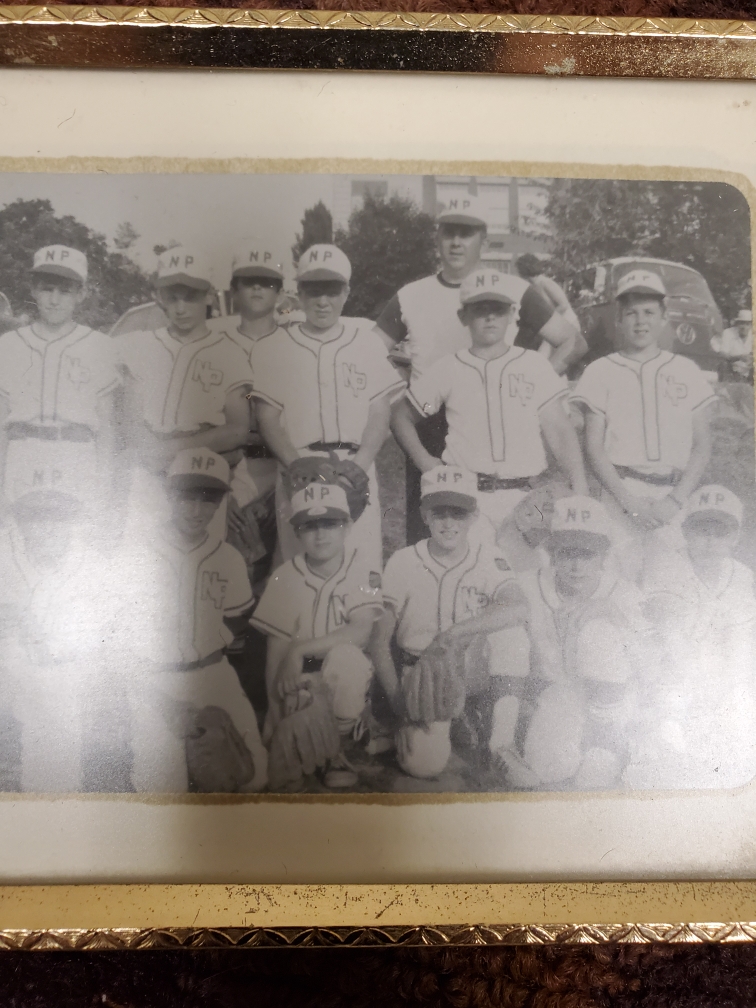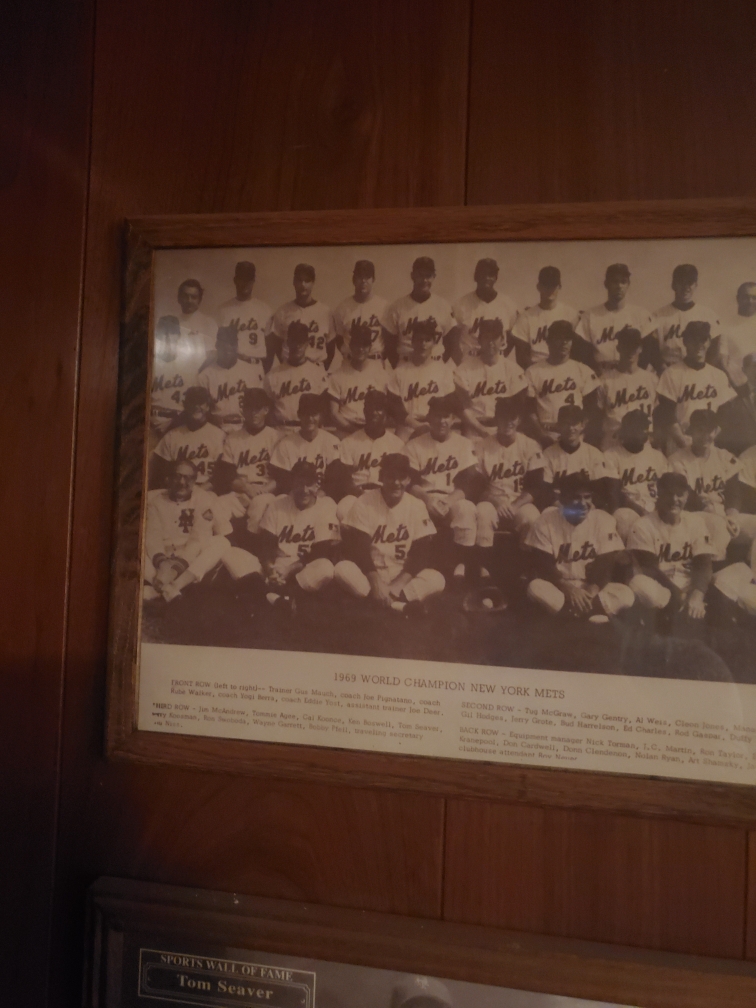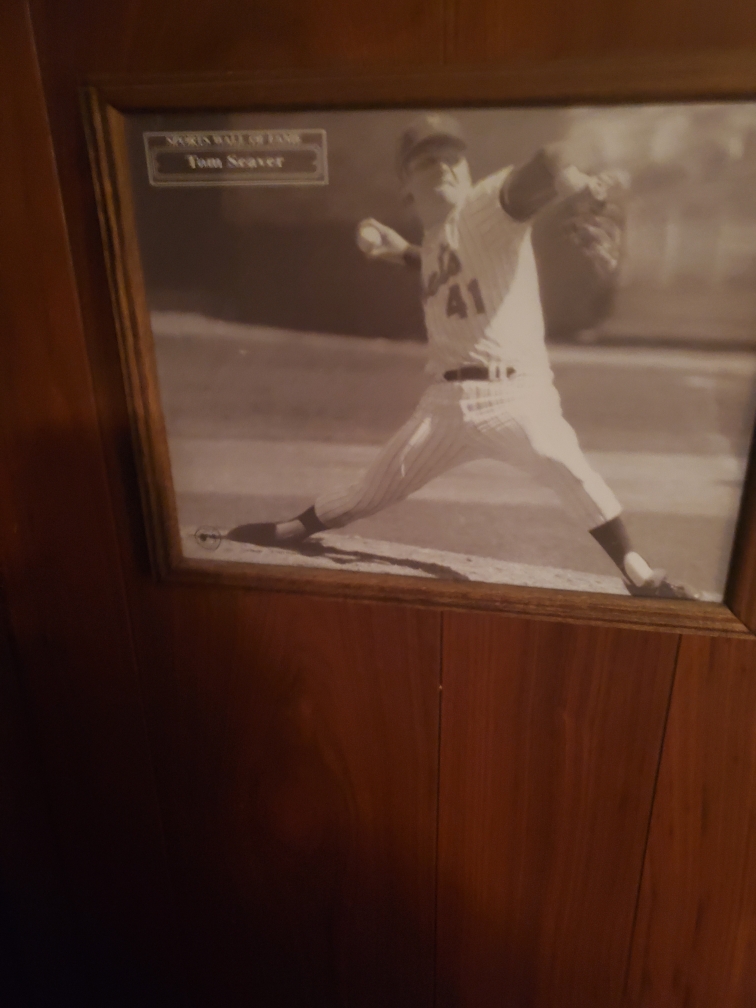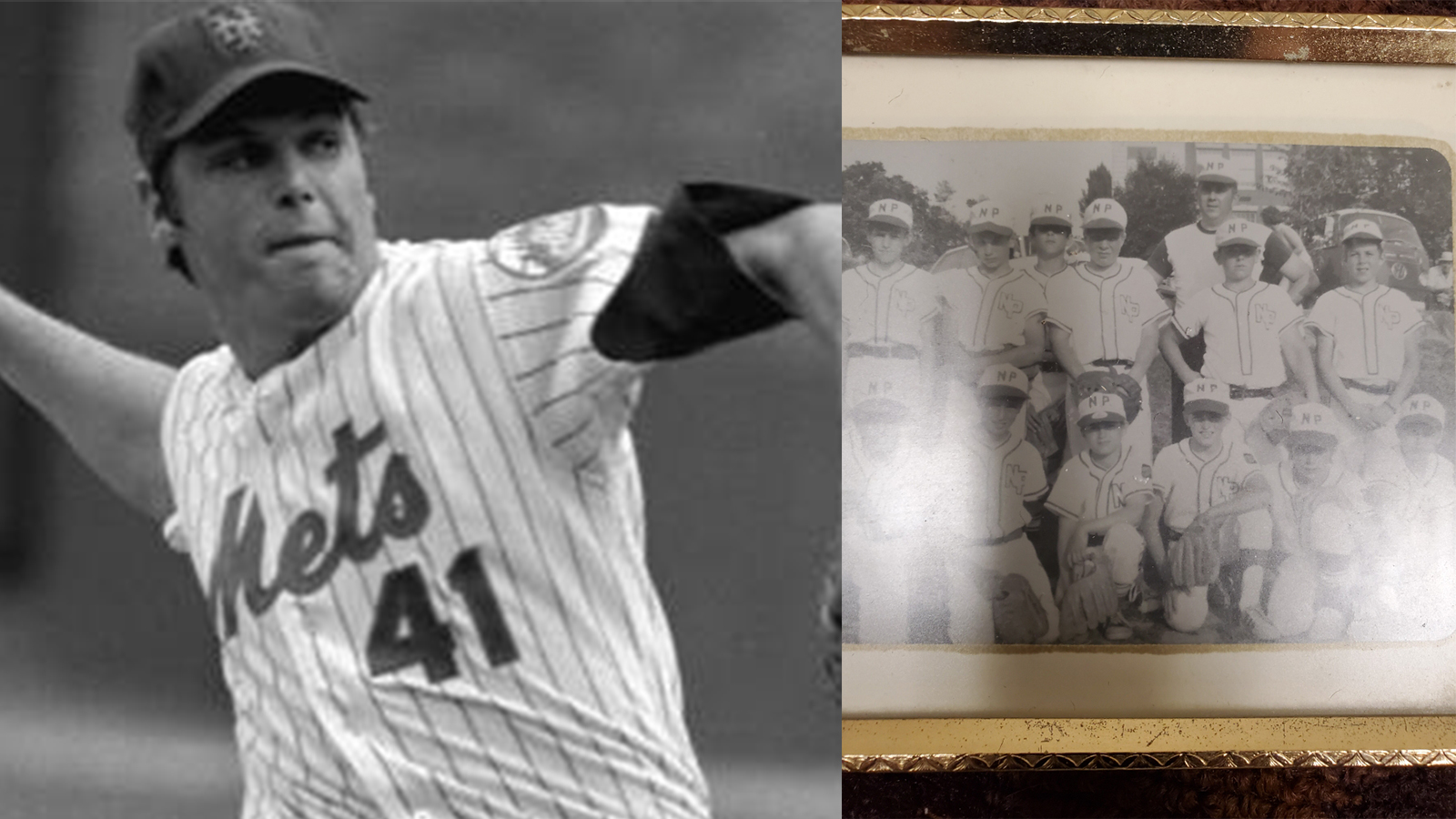The sunlight was coming through the tunnel that led to the field. For a nine year old at his first major league baseball game it felt as if heaven was waiting to take me in. I left my dad and my brother behind and sprinted through a passage way to the Gods. The promise land was right in front of me now as my eyes darted fiercely searching this majestic palace for my idol who was somewhere out there in that pasture of green. The glorious noise of the arena where the gladiators of my dreams resided included the literal crack of a bat and baseballs connecting with gloves. It was early September in the year of 1969 and the New York Mets were finishing their eighth year of existence. For seven years in a row the Metties had been the laughing stocks of the National League, finishing in last place each year. But this year, late into the season, led by a 24 year old right-handed pitcher from Fresno, California, named George Thomas Seaver. The Mets were battling the Chicago Cubs for first place in their division. That night Jerry Koosman pitched for the Mets as they beat the Montreal Expos 3-1, and with a Cub loss that same night the New York Mets moved into first place for the first time in their history. Tom Seaver, who went on to have a 25-3 record that year and win the Cy Young award didn’t throw a pitch that game. Still a third grade boy from New Paltz, New York could not take his eyes off of the player wearing number 41. The whole game Seaver was on the top step of the dugout, cheering, conjoling teammates, living and dying on every pitch. I already understood what an amazing pitcher he was, but on my first trip to a major league ballpark I got a glimpse of how the leader of a professional sports team was suppose to act.
Tom Seaver was “Tom Terrific” well before that quarterback from New England. He was also known around New York as “The Franchise”. He was the face of the 1969 Miracle Mets who went from the cellar straight to the top of the world cumulating with a four games to one World Series triumph over the Baltimore Orioles. Before Al Michaels was asking, “do you believe in miracles?” in reference to the USA hockey team’s gold medal triumph in Lake Placid in 1980, the Mets had already performed a true miracle. As a kid my love affair with the Mets had everything to do with Tom Seaver and what he represented to a young ballplayer who was looking for an athlete to mimic. Seaver was a handsome kid from the the far west, who played his college ball at USC under legendary coach Rod Dedeaux. Tom “Terrific’s” 5’10 stocky frame didn’t make him look like the power pitcher he was when the Mets drafted him in 1966 (actually drafted by the Braves). His first two years with the Mets his record were 16-12 and 16-13 respectfully and the best the Mets could finish was in a solid last place. There was no indication to think that 1969 was going to be a miracle year and that Tom Seaver was going to become the darling of the town. That season the Mets won a 100 games, beat the Braves in the playoff, and then the Orioles in the World Series to be Champions of the baseball world. New York had never seen anything like it, and hasn’t since.
After that fall night in 1969 it was Tom Seaver who I wanted to be like when I became an adult. I worshipped the dirt he would get on his right knee as he dragged along the ground in his pitching motion. Unfortunately my skills as a pitcher made it easy to recognize that the majors were not going to be for me by the time I was 12. Despite falling short on the talent side it didn’t mean that I gave up my love affair with my hero. The thing that I admired so much about Seaver was what a consummate professional he was. His wife Nancy was a beautiful Californian blond that appeared to be the old fashioned style supportive wife. The glamour couple stayed married for over 50 years and had two daughters that went on to be productive adults. Off the field Seaver didn’t comment on politics, or the current events of the day. Not once was he ever in the newspapers for nefarious behavior. He went to work everyday with an amazing preparedness, passion and focus. He was a strikeout pitcher who went on to win 311 games and in 12 seasons with the Mets pitched 171 complete games. In his 12 years with the Mets I rarely missed a game he was on the mound. I was either glued to the television in my family’s basement, or listening to my transistor radio walking home from school. There are four particular games that still stand out in my consciousness today, days and nights that Seaver gave me unforgettable thrills:
1.) On a summer night in July of 1969 my whole family sat intensely by the boob tube watching the Mets taking on the Cubs, two teams engaged in a heated pennant race. Seaver was at his best that night and he carried a perfect game into the ninth. The Cubs 26th batter that night, Jimmy Qualls, broke both myself, and my idol’s heart with a soft liner up the middle for a base hit. I recall how disappointed I was until I saw Seaver with his wife Nancey on the post game show (Kiner’s Korner) laughing and giggling talking about what a big win it was for the team.
2.) Then there was the time in April of 1970: I was walking from the Campus School to the reformed church for choir practice. (lol.) I had the transister radio on outside the church as Seaver and the Mets were taking on the San Diego Padres at Shea Stadium. I listened as “Tom Terrific” struck out the last 10 Padres to give him a total of 19 for the game, breaking the record for consecutive strikeouts and tying the record for strikeouts in one game. Needless to say my voice got a rest that day.
3.) The third game that is etched in my mind was October 15, 1969, game four of the World Series at Shea Stadium. It was the game of the famous Ron Swoboda catch that saved the Mets from falling behind the Orioles in the ninth.
The Mets went on to win the game in the 10th and Tom Seaver had his only career World Series career win in a 2-1 (10 inning) complete game victory. I can still see J.C. Martin’s bunt (he was pinch hitting for Seaver in the 10th) a Baltimore mis-throw, and Rod Gaspar sprinted home into arms of the jubilant Mets ace.
As years went on my interest in baseball weaned but I never stopped following Seaver’s every move. I cried June 15th 1977 the day the Mets sold “The Franchise ” to Cincinnati. Elvis Presley died that same summer Tom Seaver put on a Reds uniform, but we all knew he never stopped bleeding blue.
4.) It was in 1985 that fate brought me to Yankee Stadium to see the Yanks take on the Chicago White Sox. I hadn’t been to a professional baseball game in several years but I knew Seaver was on the White Sox and I knew he had reached 299 victories and would be pitching that Sunday afternoon. A friend of mine who worked for Pepsi had gotten me seats right behind the White Sox dugout two rows above where Nancy Seaver and her daughters were sitting. It was Phil “Holy Cow” Rizzuto day at the house that Ruth built and I was right there when the Scooter got knocked on his ass by a heifer. I was traveling with an old college girlfriend who had a hard time understanding when I explained to her that this was some sort of justice with destiny between me the man I still admired so much. I was going to have the opportunity to watch one of greatest pitchers of all time, my childhood idol, reach the highest milestone a major league hurler can obtain; win 300 games. Don Baylor came up in the ninth for the Yanks with two outs and two men on and Seaver’s team leading 4-1. When Baylor hit the pitch I thought for sure it was out of the park and my voyage with destiny was to be lost. But Mike Nichols settled under the ball deep in left field and made the catch securing win number 300. About five minutes later Seaver made his way in my direction to hug his wife. I yelled to my boyhood idol, who was now 40, ‘thanks for the memories Tom’. I still like to think I saw him glance in my direction and give me a wink. A signal to myself and my hero that fate had won a victory.
I hadn’t given my boyhood idol much thought in recent years. I knew that he had been a baseball commentator after his playing days and that his passion later in life was owning and operating a winery in the Napa Valley. This past fall as I was scanning through the sports section I noticed a headline: “Tom Terrific” is not well.” The article went on to say that Seaver was not going out in public anymore because he was suffering from Alzheimer’s disease. That story prompted me to write a piece on the summer of 1969. Of all the amazing events that summer Tom Seaver and the Miracle Mets is still the one most prominently seeded in my memory. Last night I was walking through the bottom floor of my house after having just heard the news that the favorite warrior of my youth had passed. I swung open a door to a room we always keep closed (it use to be Ricky the rabbit’s room). I hadn’t entered that room in over 20 years, but it didn’t surprise me to see the two pictures hiding on the wall behind the door. One was of a team picture of the 1969 World Champion Miracle Mets, the other was of a 25 year old kid in a baseball uniform showing off the form of one of the best pitchers of all time.



I stood motionless, and dug deep to send myself back one more time. It wasn’t until I closed my eyes that I could the light. I was a boy again running through a tunnel leading to a field of my dreams. For a moment it was all in front of me again. The deep green, a perfectly groomed surface, the hill in the middle, the odor of beer and peanuts, and the electric sound of a ballgame getting ready to begin. Bud Harrelson, Cleon Jones, Jerry Grote and of course Tom Seaver preparing for the battle ahead. I took a deep breath and they were gone.

